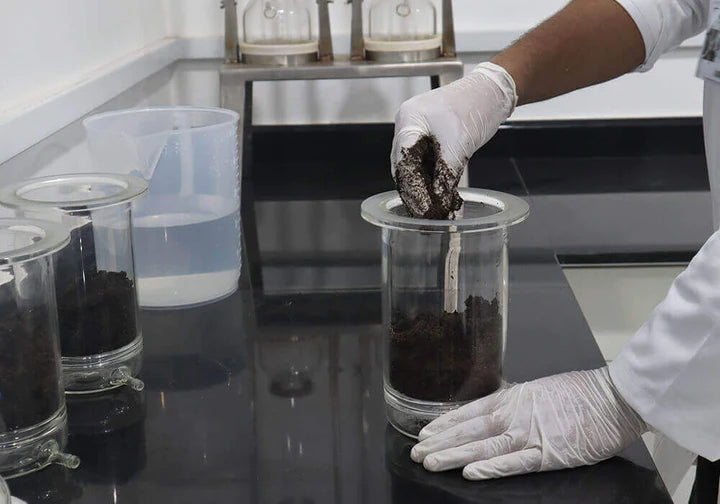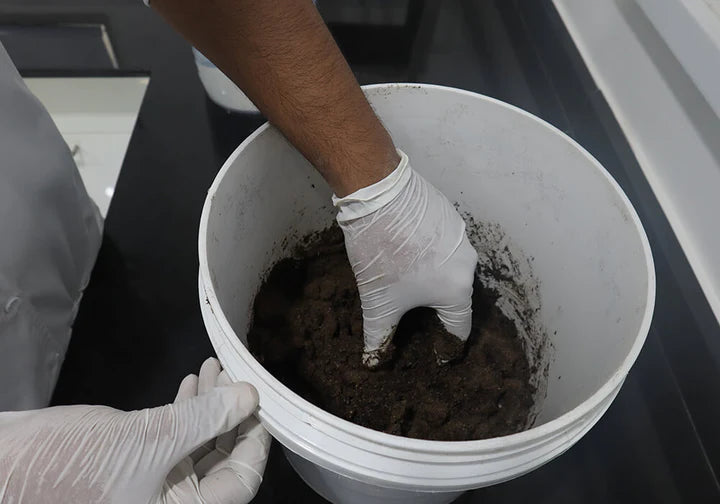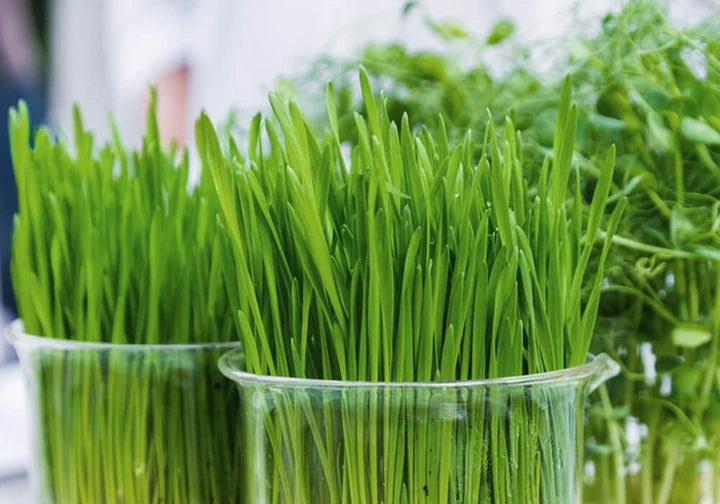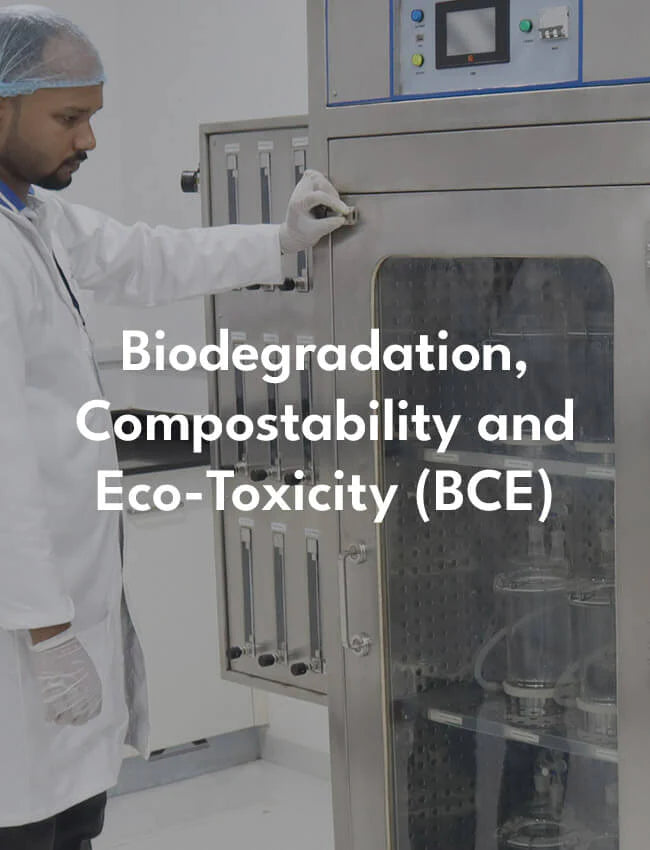Evaluate biodegradation, compostability and eco-toxicity through standardized lab tests
At Sparkle, we consider the entire product life-cycle when designing a product. We believe that as manufacturers of single-use absorbent hygiene products, we must be mindful of all waste management scenarios when choosing sustainable ingredients. We constantly look for ways to replace the non-renewable, non-biodegradable and non-compostable components of our products with more sustainable alternatives as composting provides a better solution to landfilling or incineration.
We have designed an in-house, lab-scale standardized test facility for measuring the biodegradation, compostability and eco-toxicity (BCE) of our newly-developed bio-materials. This way, we can not only quantify the time it takes for our materials to biodegrade, but we can also examine whether our sustainable ingredients impede or accelerate the biodegradation process in different environments (home composting settings, industrial composting conditions, soil, or even landfill environments). At our Biodegradation, Compostability and Eco-Toxicity (BCE) lab, we are conducting research on the following areas:
1. Biodegradation and compostability of our products in different environments
2. Disintegration of our products in industrial and home composting settings
3. Eco-toxicity levels of the compost produced from product biodegradation

After developing any sustainable product that meets all of our performance and quality criteria, we measure the capability of our ingredients (as well as the entire product) to biodegrade and get converted into natural substances such as water, carbon dioxide, and compost by microorganisms.
According to most globally-accepted standards, a material can be considered biodegradable if 90% of the organic carbon is converted into carbon dioxide within six months of starting the test. Accordingly, we follow several international standards for our in-house biodegradation tests such as ISO 14855, ISO 17088, EN 13432, ASTM D6400, and AS 4736.
After developing any sustainable product that meets all of our performance and quality criteria, we measure the capability of our ingredients (as well as the entire product) to biodegrade and get converted into natural substances such as water, carbon dioxide, and compost by microorganisms.
According to most globally accepted standards, a material can be considered biodegradable if 90% of the organic carbon is converted into carbon dioxide within six months of starting the test. Accordingly, we follow several international standards for our in-house biodegradation tests such as ISO 14855, ISO 17088, EN 13432, ASTM D6400, and AS 4736. We also conduct research about how our products would behave in different environments such as industrial or home composting conditions, in soil or water, etc, especially since oxygen parameters, temperature levels, microbes, and moisture conditions vary in different environments.

After quantifying how long it takes for our materials to biodegrade in different environments, we also evaluate the extent of our materials physically breaking down and falling apart into smaller pieces. To evaluate the degree of disintegration, we use the pilot-scale composting set-up to closely mimic the real-life composting process. According to test standard ISO 16929, at least 90% of the original test materials should pass through a 2 mm sieve after 12 weeks.

After conducting biodegradation and disintegration studies, we also evaluate the properties of the final compost produced from the test materials to determine whether the residual material shows any adverse effects on the ability of the compost to support plant growth or the germination rate.
According to OECD 208, EN 13432 (Annex E), ISO 17088, ASTM D6400, AS 4736 standards, eco-toxicity tests should be performed on two plant species. Blank compost (without any test material) and compost produced after biodegradation period (with test material) are used to compare germination rates and plant growth rates. The germination rate and the plant biomass of the compost with the test material should be higher than 90%, compared to the blank compost without any test materials.

